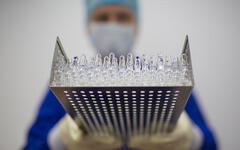Is Russia’s COVID-19 vaccine safe? Brazil’s veto of ...
In an online press conference several hours later, the Brazilian Health Regulatory Agency (Anvisa) defended its decision, maintaining that documentation from some of the Russian facilities making Sputnik V shows that one of its two doses contains adenoviruses capable of replication, a potential danger to vaccine recipients.
欸踢屁 ATP
欸踢屁 ATP
Both of the adenoviruses that make up Sputnik V, known as Ad5 and Ad26, are churned out by cultured human cells called HEK293 cells. The adenoviruses ferry the coronavirus spike gene to the vaccine recipient’s cells, which then make spike, prompting an immune response.
欸踢屁 ATP
In order to stop the adenoviruses from replicating once inside their human host, the vaccinemaker removed a gene they need for reproduction, called E1.
欸踢屁 ATP
The viruses can copy themselves in HEK293 cells, which are engineered to have a stand-in E1 gene, but they are not supposed to be able to replicate once they are separated from the human cells and packaged in the final vaccine product.
欸踢屁 ATP
It’s long been known that Ad5 can on rare occasions acquire the E1 gene from the HEK293 cells, converting what is supposed to be a crippled virus into an RCA.
